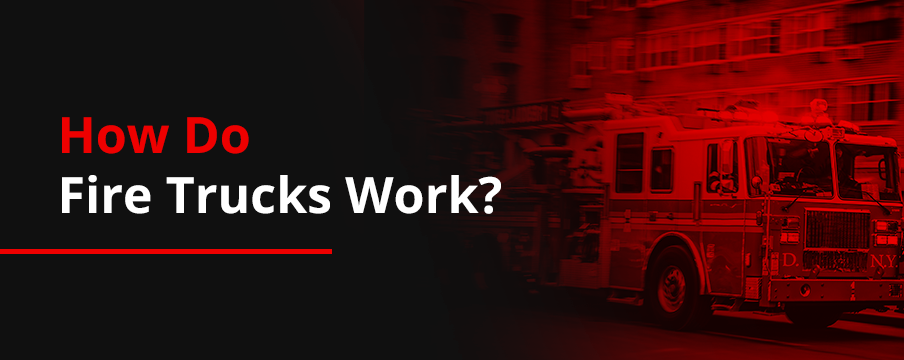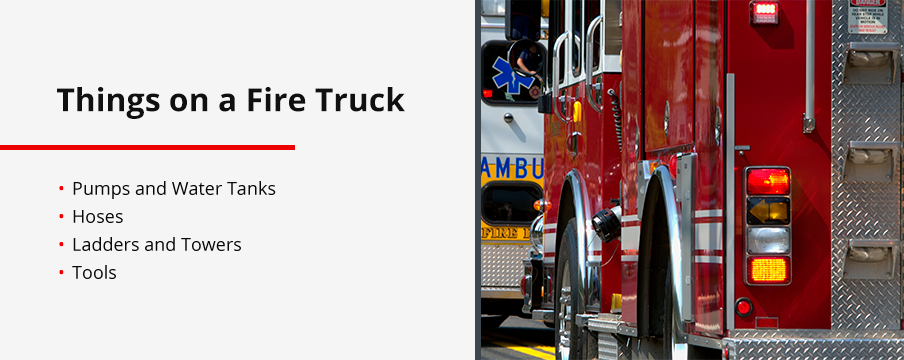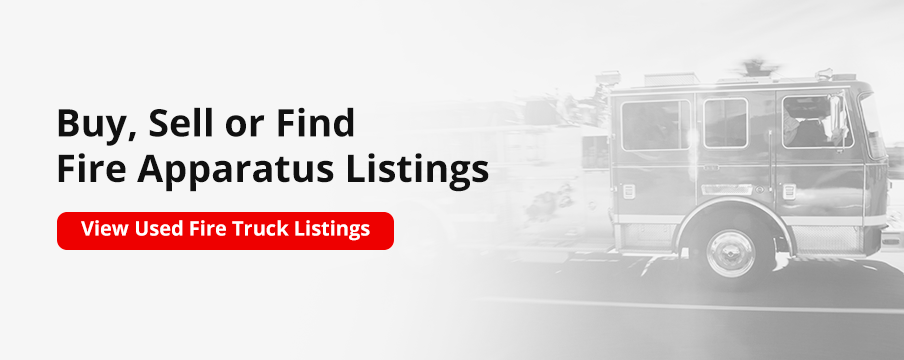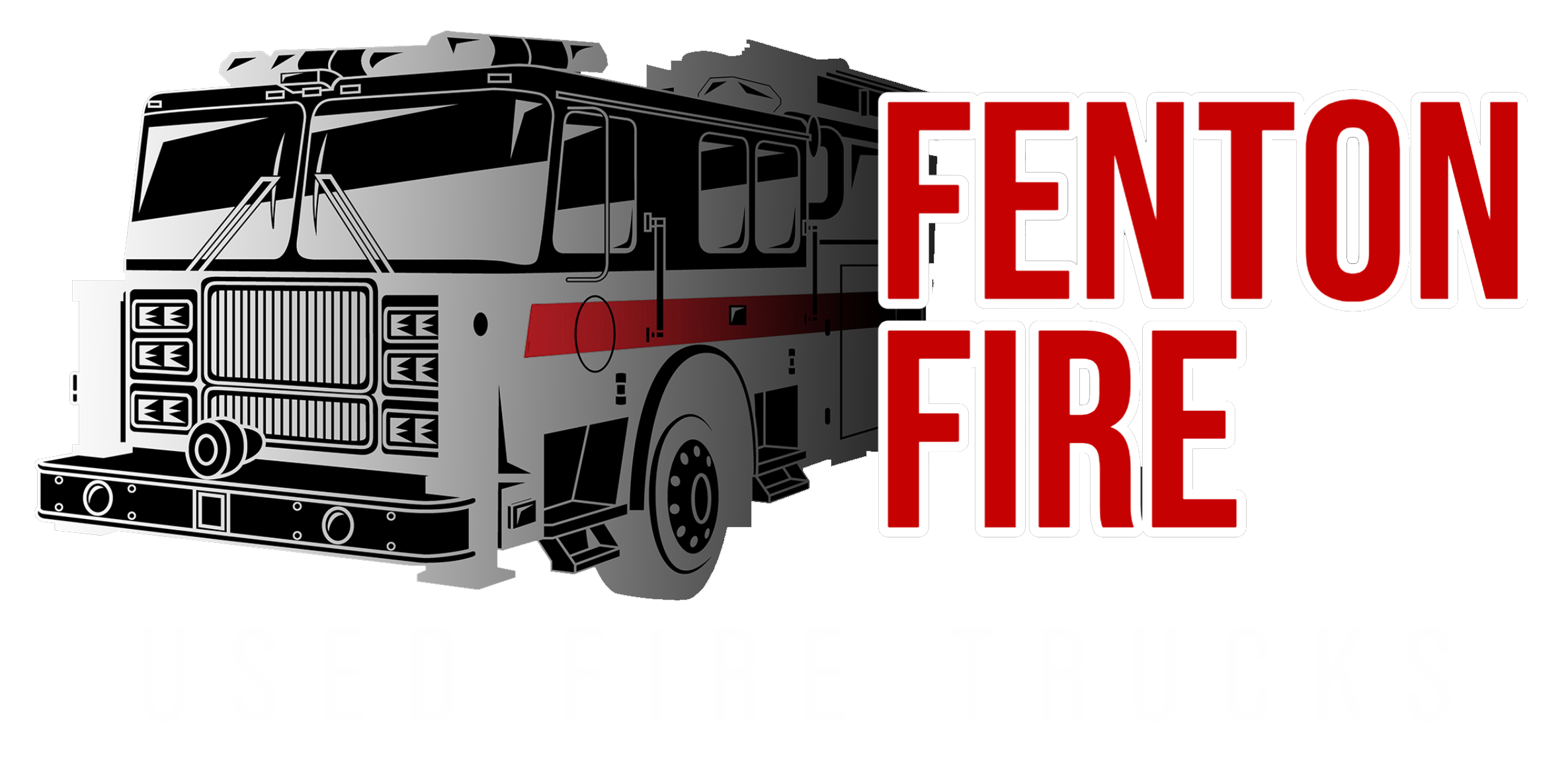
From a young age, we learn about the heroic work of firefighters and grow up admiring their massive red trucks with lights and sirens — but firefighters and their engines are much more than the painted outline we remember. The ins and outs of how a fire engine works range from transporting firefighters to carrying all the right gear and equipment. A fire truck helps these dedicated men and women combat various disasters.
Fenton Fire Equipment, Inc., sells and buys pre-owned fire apparatuses. If you’re a new firefighter seeking more information or have a general curiosity for the industry, we will give you a rundown of the basics.
How Do Fire Trucks Work?
A typical fire truck description is a vehicle that combines a pump, water tank, and enough space for personnel with all the tools to get the job done — each component plays a vital role in battling fires. The rigs features emergency lights and sirens to warn people of their presence. They also have equipment like computers and two-way radios to ensure constant communication between the captain and the crew, plus the fire station and other personnel heading to the site.
Fire trucks have various uses, with a specific type of fire truck often used in firefighting and rescue operations such as:
- Aerial
- Airport
- Conventional
- Hazardous materials
- Logistical support
- Technical rescue
- Water-carrying
- Wildland
Fire engines are available in various configurations to accommodate the needs of different fire departments and situations.

Things on a Fire Truck
Fire engines are large machines that not only transport firefighters, but also carry pumps and water tanks, hoses, ladders and a vast range of tools.
Pumps and Water Tanks
Manufactures like Pierce, E-One and more produce engines and pumper tankers that carry water in a large tank to provide relief during fires. These units often have the capability to draft water from other sources, such as a fire hydrants, lakes or even pools.
In most cases, the pump is situated right behind the cab. The massive impeller pulls water from the tank located right behind that. Manufactured by companies such as Hale or Waterous, it is not unusual for the pump to be able to move water at a rate of 1500 gallons per minute or more.
Firefighters control the pumps via the pump panel, which regulates how much water flows through each fire line. The process of operating a water tank involves three main steps.
- The pump operator will engage the pump. This is usually done from inside the cab, before exiting the vehicle.
- Understanding which hose lines have been pulled off the truck, they will direct the water from the tank to the appropriate output valves.
- By monitoring the pressure and water levels, the operator will ensure correct pressure and water supply to each hose line.
Manufactures, such as E-One and Pierce often incorporate foam systems into their trucks. A truck with CAFS or Compressed Air Foam System, can employ different types of foam such as Class A or Class B. Class A saturates materials to prevent them from re-igniting, while Class B is for incidents where flammable liquids are present, such as a car fire.
Fire truck tanks can hold anywhere from 500 to 3,000 gallons, depending on whether you have a pumper or a pumper tanker.
Hoses Lines & Nozzles
Hoses lines connect to various points on a fire truck. They expel water at different rates and pressures depending on the nozzle type, diameter and length of the hose. Types of lines include the following.
- Booster line: A booster line is the smallest hose on a fire truck, making it ideal for quick deployment in small fires
- Cross-lay hose: A cross-lay usually sits above or below the pump panel and can be deployed from either side of the truck
- Deluge gun: Also called a deck gun, the deluge is above the pump panel, and is ideal for large fires.
- Hose packs: When firefighters need to reach the higher levels of a structure, they can take a bundled hose pack.
- Pre-connects: Many of the hoses on trucks are pre-connected. This saves time, allowing the pump operator to flow water as soon as the hose has been stretched off the fire truck.
Hoses can range from 200 to 1,000 feet long, one to five inches in diameter and expel 95 to 1,000 gallons/minute, depending on whether you have a cross-lay hose or deluge gun.
Ladders and Towers
Ladder trucks are appropriate when fires overtake multi-story buildings or areas that extend far off the ground.
The ladder systems raise and lower using a hydraulic piston rod that can move the apparatus left and right, as well as extend it to different distances. For example, a burning apartment building will demand the use of a ladder.
Ladder trucks and Quints can have ladders extending over 110′. Firefighters can control the system using a set of joysticks at its base or, in some cases from the bucket.
Because of the trucks extreme height, four outriggers are required for stabilization and extend from each side of the truck. Without these braces, the truck can tip over. To ensure safe and effective operations, the operator must ensure the truck is positioned on solid ground.
Tools
Fire engines and firefighters often endure much more than fires. Trained professionals deal with injuries, search and rescues, highway accidents and many other scenarios. Compartments line the sides and back end of each truck to ensure they have everything they need. Because firefighters carry hundreds of additional tools, they need maximum storage space.
For example, they carry equipment, such as medical/EMS supplies, pike poles, sledgehammers, chainsaws and self-contained breathing apparatuses. Fire engines store other tools like:
- Axes
- Barrel strainers
- Bolt cutters
- Fire extinguishers
- Foam inductors
- Gated Y adapters
- Halligan bars
- Jaws of Life
- Nozzles
- Salvage covers
- Sheetrock pullers
- Spanner and hydrant wrenches
- Ventilator fans
Preparation is vital when your job involves facing a raging wildfire one day and saving a family the next. Fire engines carry a wide variety of equipment to keep firefighters and others safe.
Firefighter Transportation
Fire trucks can transport most of the crew to the fire scene. The unit sits in two sections — the front of the cab holds the captain and driver, while the back contains the rest of the crew. Special seats that hold SCBA allow the crew to “gear up”, donning their air packs while on the way to the intervention while storing them neatly while not in use.
Many fire trucks have built-in headsets, allowing all crew in the truck to communicate clearly with each other while receiving continuous updates from dispatch.

Buy, Sell or Find Fire Apparatus Listings
Fenton Fire Equipment has used fire trucks to match your requirements. Our team is highly responsive to your requests and provides fair and honest advice.
View new listings of fire trucks from Fenton Fire.
